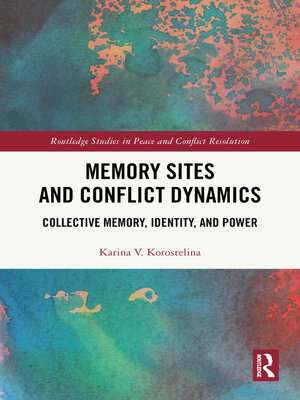Memory Sites and Conflict Dynamics
ebook ∣ Collective Memory, Identity, and Power · Routledge Studies in Peace and Conflict Resolution
By Karina V. Korostelina

Sign up to save your library
With an OverDrive account, you can save your favorite libraries for at-a-glance information about availability. Find out more about OverDrive accounts.
Find this title in Libby, the library reading app by OverDrive.



Search for a digital library with this title
Title found at these libraries:
| Library Name | Distance |
|---|---|
| Loading... |
This book explores the ways in which memory sites contribute to the dynamics of identity-based conflicts, fueling fears and sharpening divisions, or promoting commonalities and reducing violence.
Through an analysis of the dynamics of identity-based conflicts, the book shows how memory sites become intertwined with the transformations of social boundaries and perceptions of relative deprivation, outgroup threat, collective axiology, and power relations. It posits that these two sets of factors – the functioning of collective memory as an ideological construct and the transformation of conflictual social relations – define the role and influence of memory sites in the dynamics of identity-based conflicts. Through multiple case studies representing different dynamics – dealing with fascist and communist pasts in Italy, post-colonial relations between South Korea and Japan, ethnic conflict in Kosovo, and tribal acknowledgment for Native American Nations – the book discusses how memory sites contribute to competition over ownership, fights for legitimacy, claims of entitlements, and negative portrayals of the Other. In doing so, it outlines four major functions of memory sites – enhancing, ascribing, interacting, and legitimizing – and shows how they contribute to and shape the structure and dynamics of conflict. Concentrating on the linkages between memory sites, violence prevention, and reconciliation, the book proposes solutions for promoting peace, including the focus on plurality of heritage, recognition of fluidity of meanings, and resistance to singular interpretations and manipulations by identity entrepreneurs.
This volume will be of much interest to students of peace and conflict studies, memory studies, and International Relations in general.







